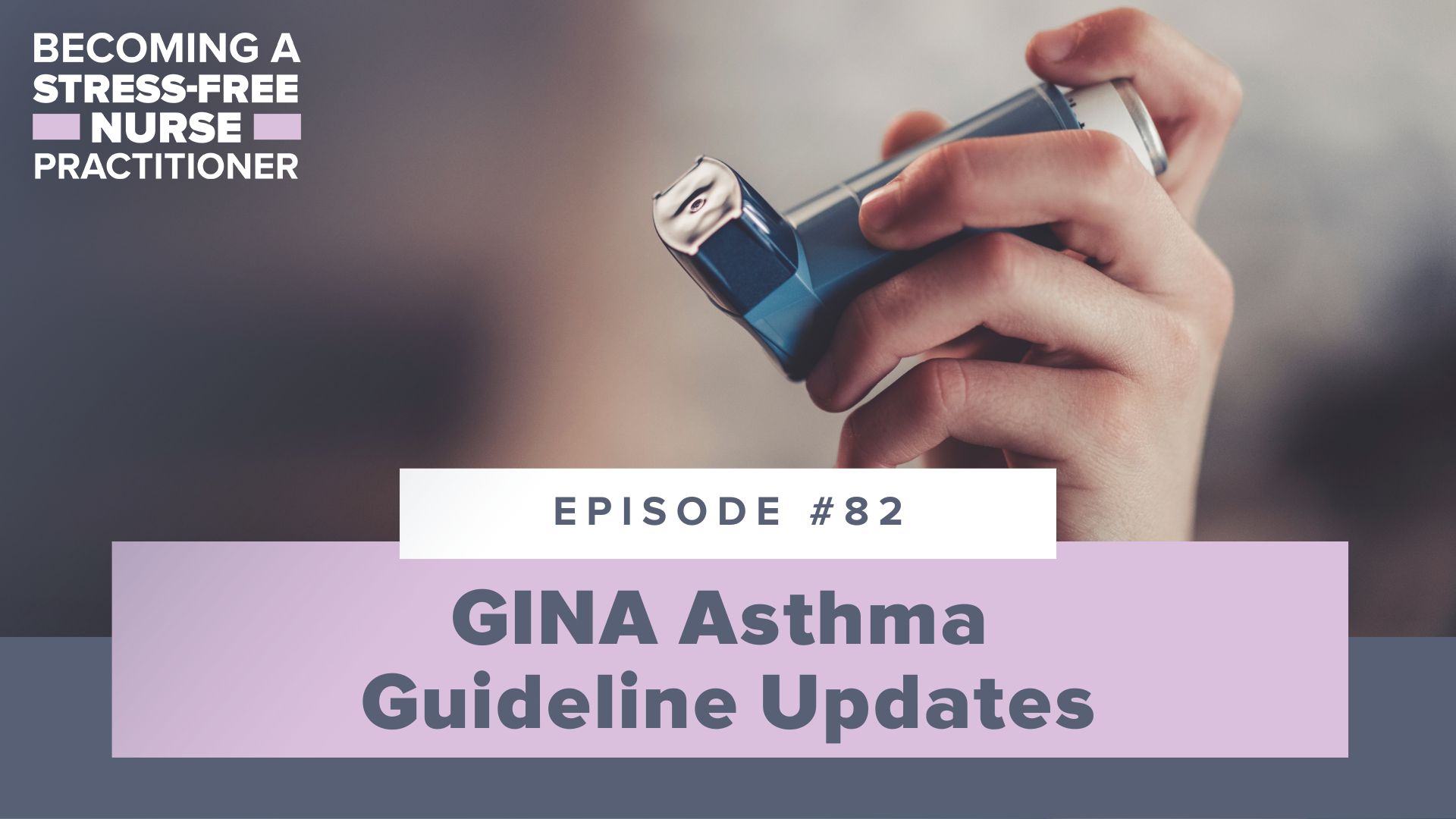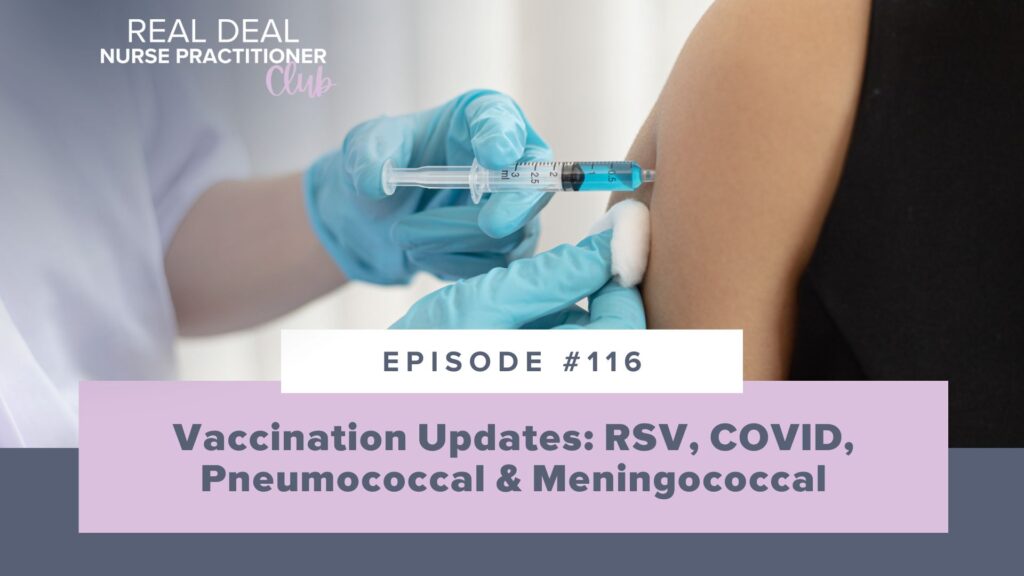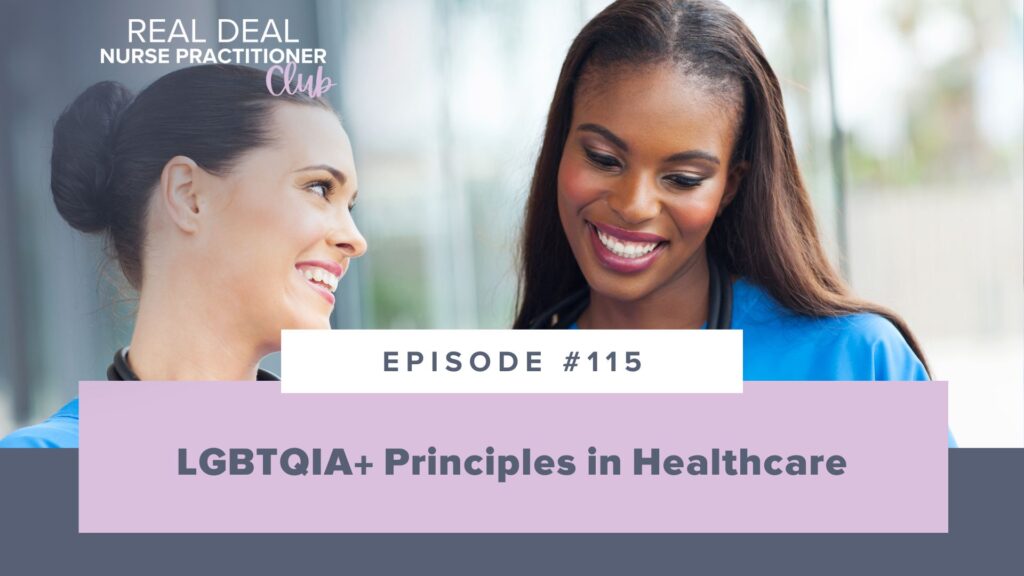
For years, we’ve been getting requests for content on practice guideline updates, which we’ve held off on. But like you heard last week, I’m going to be trying out some new things with the podcast this year, so your wish is my command.
Today’s update is going to be all about the GINA asthma guidelines. After decades since true concrete changes were made, we’ve seen two major changes in a span of just a few years which has resulted in a shakeup in the world of asthma.
So, whether you’re studying for your exam or actually entering into practice, listen in this week to hear a full rundown of the GINA asthma guideline updates and the main takeaway you need to know.
If you’re looking for support, no matter what phase of your nurse practitioner journey you’re currently in, I have communities available for both students and new nurse practitioners. In these communities, we work to uplift one another and grow this profession together every day, so click here to check them out!
What You Will Discover:
- The main reasoning behind the ICS/LABA update in 2019.
- A full rundown of the GINA asthma guideline updates.
- The cornerstone of asthma treatment.
Featured on the Show:
- If you’re looking for extra support, I have communities available for both students and new nurse practitioners. Click here if you’re a student, and click here if you’re a new NP!
Full Episode Transcript:
Welcome to Becoming a Stress-Free Nurse Practitioner, a show for new NPs and students that want to pass their board exam the first time and make that transition from RN to NP as seamless as possible. I’m your host Sarah Michelle. Now, let’s dive into today’s episode.
Hello my beautiful friends, it’s Sarah Michelle here. I hope you listened to my last podcast episode that was all about heart month, and me, and Meadow, and our journey in this last year. And if you did, you heard that I’m going to try out some different things with this podcast this year.
So we’ve been getting requests for years and years now to please, please, please do some practice guideline update content. And we’ve always kind of held off because I never want it to be misconstrued as medical advice. So we are literally just reporting the update to you.
And today’s update is going to be all about the GINA asthma guidelines because we see it asked about in our Facebook communities it feels like every single day. So I know it’s going to be super important whether you’re studying for your exam or you’re actually entering into practice.
And, of course, as a shameless plug here, as always if you are not a part of our NP communities on Facebook, so we have a student group and a new NP group, you definitely need to join because they are two of the most supportive and informative groups out there.
There is so much information that you can get your hands on. And especially in the student group we have full-time nurse practitioners that are in there running that group, answering questions and you know that you are getting reputable support. And so that’s a really huge deal especially in a Facebook group.
And so today we’re going to talk about the asthma guidelines. I think a common source of confusion for students comes with the yearly GINA report. GINA just stands for Global Initiative for Asthma, which is a worldwide foundation started in the 90s to make recommendations on diagnosing and treating asthma effectively.
Now, GINA puts out a report every single year and the biggest difference we have seen in recent years is that there have been true actual changes in asthma treatment guidelines. Prior to 2019 it had been a long time, and by a long time I mean like decades since true concrete changes were made.
But then in 2019 we saw a huge change with the inhaled corticosteroid, long-acting beta agonist, or the ICS/LABA taking over the role of the short-acting beta agonist or the SABA for that intermittent or step one asthma treatment. And as a little extra caveat here, it is 2023 now, there are some more updates that have come out. But they’re smaller updates and we’re going to get to that in this episode.
So in 2019, we saw the change from using the SABAs, like albuterol, to using more of those ICS/LABAs, typically seeing budesonide/formoterol use to control intermittent asthma. And there’s actually really great reasoning behind this, like they didn’t make this change willy-nilly.
Basically, after decades long research in the 80s and 90s there were some conclusions that SABAs alone were contributing to asthma deaths due to overuse and underperformance in exacerbations. And so in 2007, which is about 15 years ago now, GINA really started to use this compiled data to assess the effectiveness and recommendation of using SABAs for exacerbations and intermittent asthma.
Now, what they found is that the average asthma patient was severely overusing their SABA, which was working short-term to reduce the exacerbation symptoms, but had no effect on long-term reduction of exacerbations. And that’s a really important point. This is where this ICS/LABA recommendation came to light.
And the main reasoning behind this is that the ICS, especially formoterol, was found to be an effective way to reduce lung inflammation and therefore reduce asthma exacerbations and death. There actually was an initial push to do an ICS/SABA combo, but overall this was found to be less effective than the ICS/LABA, and it’s not as widely available.
An alternative path offered for patients who maybe had a SABA already, because so many of them do, or they couldn’t get that insurance coverage for an ICS/LABA was to just take a low dose inhaled corticosteroid every time they took their SABA. But guys, ultimately, the highest recommended treatment option for patients currently is the ICS/LABA.
As I said a little bit earlier, budesonide/formoterol is usually the ICS/LABA of choice because it’s well tolerated, it tends to be inexpensive for patients, both of those things are important. And so this really came to replace albuterol, that for years and years, literally decades, we saw prescribed to our asthma patients.
So 2019 guidelines updated recommend that in step one asthma where symptoms were intermittent the ICS/LABA as needed is now the preferred inhaler. Then in step two, where patients are having symptoms more than twice a month or they have risk factors, we see the introduction of a daily inhaled corticosteroid, or the ICS/LABA could then be taken daily.
Or even another alternative, which again, it was a new sidestep for GINA to recommend, was actually to prescribe a leukotriene receptor agonist. There is even another possible route to continue that inhaled corticosteroid every time that the SABA is taken, but we just talked about it, this is not as effective. And so we definitely want to go with our most effective options when we can.
Now, those leukotriene receptor agonists did get a warning put on them a few years ago to include side effects like psychiatric changes and mood changes, things like aggression, even hallucinations. And so those leukotriene receptor agonists are not a first line choice typically, especially in our teen population. Now, of course, they work beautifully for some patients. But that is a huge safety risk factor to be aware of.
Step three was another interesting change because this is where we used to see the LABA added on to the ICS prior to the 2019 step-up method. And instead, since these patients already had an ICS/LABA, the 2019 GINA guidelines outline that we can prescribe that daily ICS/LABA, up it to a medium dose ICS, and so a larger dose of the inhaled corticosteroid essentially.
And then step four, which we know is the most severe asthma, we saw the new recommendation of the use again of that higher dose inhaled corticosteroid LABA and to refer out for pulmonary assessment.
So if you get lost for a little bit there, it’s because there’s a lot of different medications that you can use, and we’re kind of in that mid-range asthma. And that’s okay, because we love that because we love having options in how we treat our patients.
Some things are going to work better than others, but the cornerstone of treatment is definitely the ICS/LABA combo. That’s what you need to nail down in your brain. That’s our take home point here. We have shifted away from albuterol and now we’re looking at the ICS/LABA combo, typically formoterol/budesonide.
But wait, there’s more. Interestingly enough, GINA changed yet again here in 2023, literally just a few days ago. And so for any students about to take your exams, do not fear, do not panic. We know that both ANCC and AANP take a little bit to update guidelines used. So I would not worry much about this new update.
I would, however, definitely know it for practice. So if you’re a new NP listening to this episode, we just talked about how step one was that as needed ICS/LABA. And in step two we see the ICS/LABA being recommended for daily use.
On this latest update the as needed ICS/LABA specifically is identified as an ICS/formoterol combination. And this is actually the recommendation for step one and two. And then in step three we see the ICS/LABA as a daily recommendation. Step four brings the ICS/LABA to a medium dose. And then in step five, interestingly enough, GINA adds the introduction of a LAMA, that long acting muscarinic antagonist. So something like tiotropium, which are sold out in the brand names of Handi Haler and Respimat.
So this is definitely another little shakeup in our asthma world, which is crazy to think about after so many years of no changes, and now we see two pretty major changes in the span of just a few years.
So there you have it, my friends, we have discussed the newest GINA guidelines, all the big updates that we know about for practice. And something that is really a selling point to being a new nurse practitioner is that being so fresh out of school and board prep, you really do get to know all the latest and greatest guidelines like these.
And so when you’re applying to those jobs, make sure you highlight that. What you “lack” in experience, even though we know as RNs, tons of our experience transfers to the NP role, you’re going to make up for it in up-to-date clinical knowledge that others might not have. So definitely play that up, help educate those around you as well to these newest guideline changes.
I like to subscribe to nursing education journals for this as well. So I’m always getting emails when there are new changes to know about. So just a little bit of a resume and interview tip for you before I leave you today. But that’s all for this episode. And we’ll probably be doing more of these in the future so stay tuned.
As an extra bonus, friends, if you’re looking for support no matter what phase of your nurse practitioner journey that you’re currently in, I have communities available for both students and new nurse practitioners. In these communities, we work to uplift one another and grow this profession together every single day. Links to join will be included for you in the show notes.
Thanks for listening to Becoming a Stress-Free Nurse Practitioner. If you want more information about the different types of support we offer to students and new NPs, visit https://www.npreviews.com/resources. See you next week.
Enjoy the Show?
- Don’t miss an episode: follow the podcast on Spotify, Apple Podcasts, Stitcher, or RSS.
- Leave a review in Apple Podcasts.
Search the Blog
Join our Facebook Group!
Get FREE support and encouragement from thousands of FNP/AGPCNP students and our NP Support team.
Learn More3 Study Hacks to Conquer Your NP Exam!
Download these tips that have helped thousands of students pass their NP board exams.
Download NowInstitutional Partnerships
Are you a faculty member and would like to bring Sarah Michelle’s resources to your school? Email us at nursinggroups@blueprintprep.com for special institutional pricing or click on the link below to learn more.
Learn MoreGroup Discounts
Are you a student and have 10 or more classmates interested in purchasing Sarah Michelle’s courses? Email us at nursinggroups@blueprintprep.com for special pricing.




